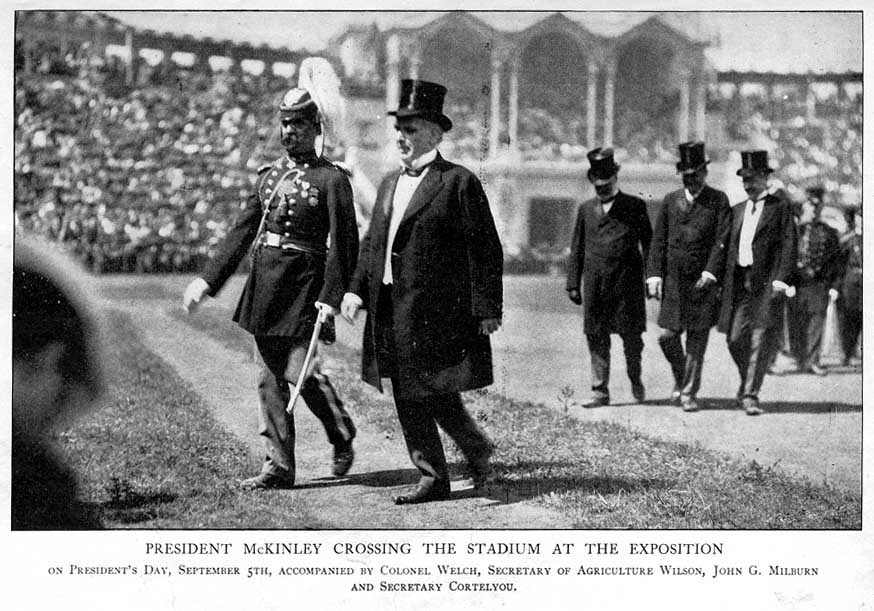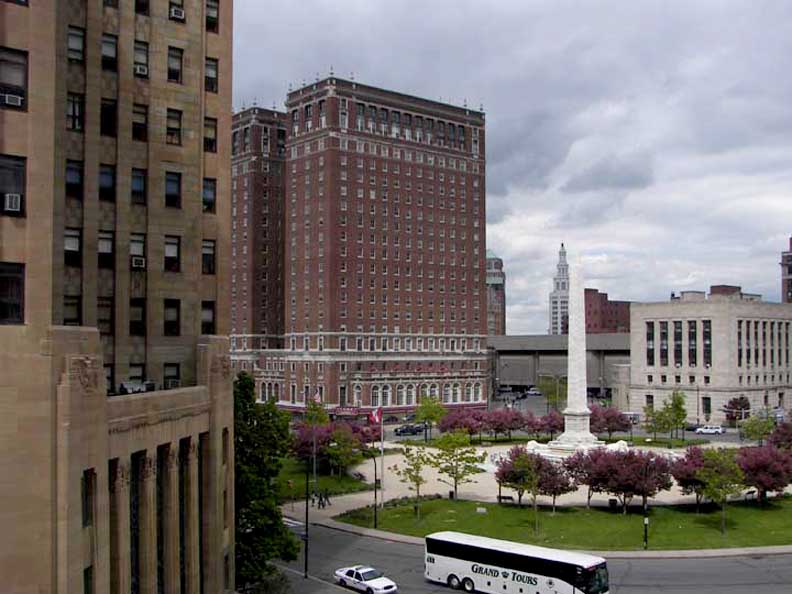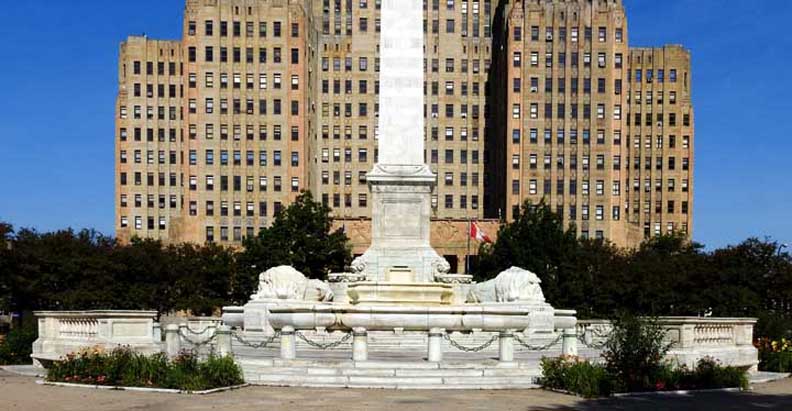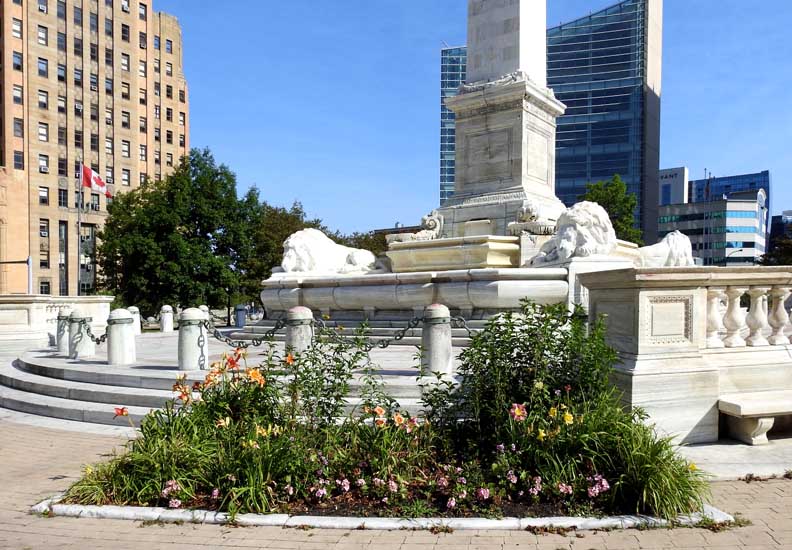Niagara Square - LINKS..................... Wm. McKinley - LINKS................. PPan-American Expo - LINKS
![]()
Niagara
Square -
LINKS.....................
Wm.
McKinley
- LINKS................. PPan-American
Expo - LINKS
McKinley
Monument
Niagara
Square, Buffalo, NY
TEXT
Beneath
Illustrations
|
Erected: |
1907 |
|
Architects: |
Carrere and Hastings |
| Builder: | Ballard I. Crooker |
|
Animal Sculptor: |
A.
Phimister
(pronounced FIM
is ter) Proctor Also by Proctor: "Agriculture" sculpture at the 1901 Buffalo Pan-American Espostion |
| Dedication: | 1907
by Gov. Charles Evans Hughes |
| See
also: |
Paul
Massing, McKinley
Square |
History 
The assassination - Photograph of wash drawing by T. Dart Walker. Source: American Memory - Library of Congress  Movie stills: President McKinley's funeral cortege at Buffalo, N.Y. / Thomas A. Edison, Inc. Source: American Memory - Library of Congress 
Postcard Upper right: Statler Hotel ... Below the Statler in the foreground is Central HS ... Below Central HS is Women's Christian Assoc. ... Buffalo Athletic Club is in left middle  Postcard Left (brown): Central High School ... Upper right (white): Telephone Company Building ... Far right, middle: Old County Hall ... Far right, lower: Stephen G. Austin House  The People's Church .... Castle Inn |
2002-2020
Photos
Looking down Court Street at McKinley Monument and City Hall 
View west ... City Hall in background 
Egyptian Revival obelisk ... Center shaft is 93 feet tall 
Center: Statler City    
Robert H. Jackson US Court House ... Each carved lion weighs 15 tons ... Note dolphin, detailed twice below: 
Waterspouts: Dolphin with volutes ... Turtle  
Marble floor and monument  Marble balustrade |
|
Niagara Square Niagara
Square is not a square, but a
circle, and is at the intersection of Delaware, Niagara,
Genesee and
Court Streets. It was laid
out
by Joseph Ellicott, surveyor and land agent for the
Holland Land
Co. in 1807. At
that time, the Square actually
is square, and its intersecting avenues (Court, Genesee, and
Niagara)
converged around a much smaller inner circle The original concept of streets radiating from the square has been severely blocked by recent building. City Hall blocks the extension of Court Street west of Niagara Square; Main Place Mall stands astride Niagara Street; the Convention Center terminates the vista to the northeast along Genesee Street; and the Charles R., Turner Parking Ramp is built over West Genesee Street. For many years Niagara Square was a poorly defined space. In 1874 Frederick Law Olmsted presented a plan for it that created a series of planted angles between incoming streets and envisioned a Civil War memorial arch (never erected) after a design by Richardson, H. H. to stand where Delaware Ave. enters the square from the north. McKinley Monument In
the center of the square, for
which Olmsted had proposed a large basin, stands the city's
memorial to President
William
McKinley, who was assassinated while attending the
Pan-American
Exposition in 1901. Burnham,
D. H.,
who was called in to consult on the project, suggested the
appropriateness of an obelisk, with fountains at the base and
decided
where it should be placed.
|
| See also: Paul Massing, McKinley Square |
Photos and their arrangement © 2020 Chuck LaChiusa
| ...Home Page ...| ..Buffalo Architecture Index...| ..Buffalo History Index... .|....E-Mail ...| ..